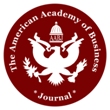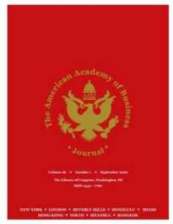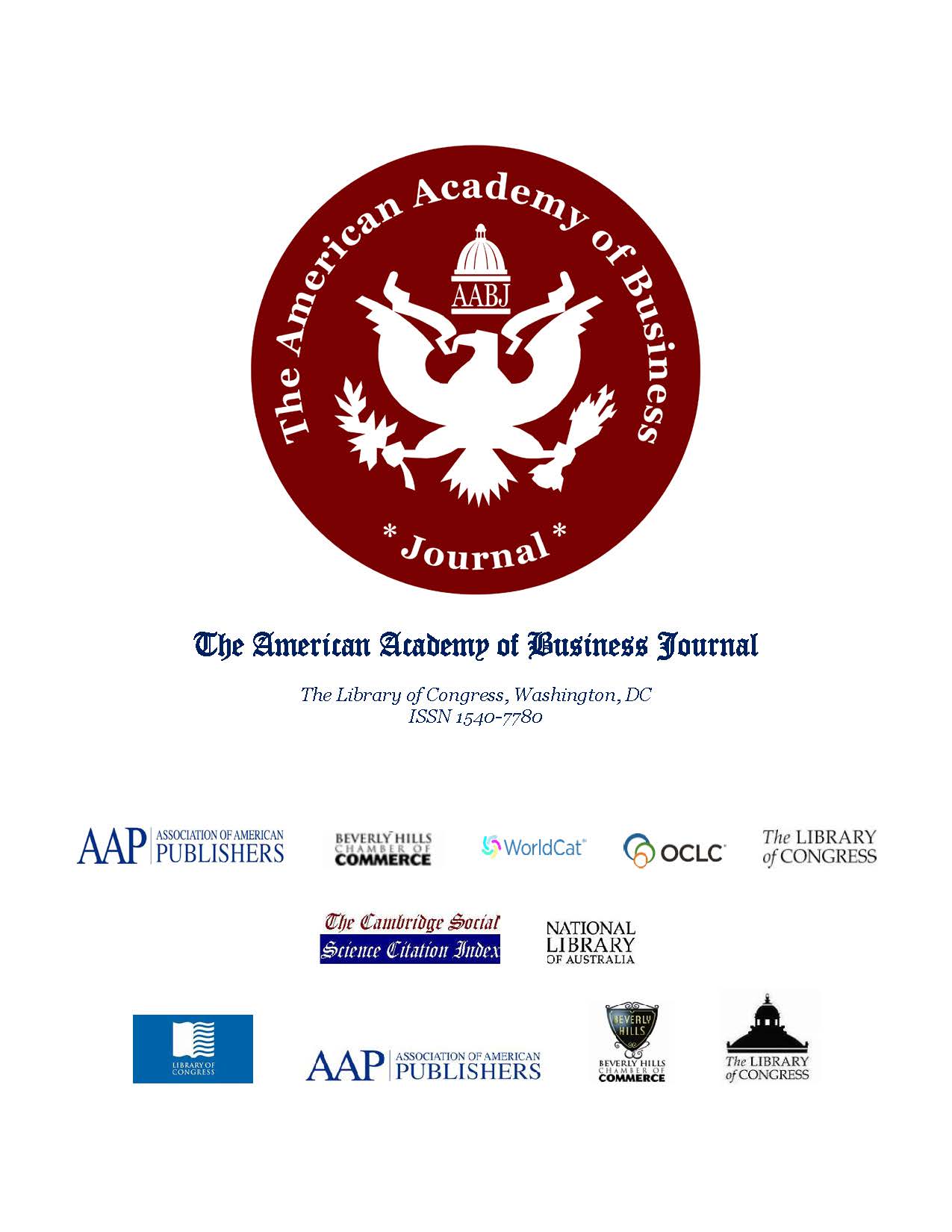|
Chick-Fil-A
Goes International
Alexandra Crozier, San
Houston State University, TX
Dr. Diana Brown, Sam
Houston State University, TX
Dr. Joey Robertson, Sam
Houston State University, TX
ABSTRACT
The
company that brought us those likable illiterate cows is planning to expand
internationally and to share their tasty chicken sandwiches with the rest of the
world. This paper analyzes the potential markets that Chick-fil-A may enter as
it expands globally. This paper examines the cultures, religions, and societal
values in these new markets and analyzes whether these factors will serve to
hinder or facilitate Chick-fil-A’s global march to market domination. How will
Chick-fil-A successfully navigate the international marketplace and succeed in
new markets including Islamic nations and countries like India and China? In
Hapeville, Georgia, Truett Cathy and his brother Ben Cathy started a restaurant
in 1946 under the name of Dwarf House. (Bovino, 2011). Eighteen years later,
Truett Cathy came up with the now well-known chicken sandwich after having
discovered the pressure cooker, which allowed him to fry a chicken breast in
just four minutes. (Privco 2014). Using this innovative method, Truett Cathy
opened the first restaurant in a Georgia shopping mall. This quick preparation
approach and intelligent restaurant placement helped to pave the way for the
food courts in modern malls all over America. (Bovino, 2011). Truett Cathy’s
vision of Chick-fil-A is embodied in his assertion that “Nearly every moment of
every day we have the opportunity to give something to someone else- our time,
our love, our resources. I have always found more joy in giving when I did not
expect anything in return.” (Cathy, 2011). In accordance with his beliefs on
giving, in 1973, Truett Cathy started a scholarship program for Chick-fil-A
employees. In the years to follow, Chick-fil-A became a leading example for fast
food restaurants and chains by selling chicken nuggets all over the U.S. (Privco,
2014). Over thirty years after starting the Dwarf House, Truett and Ben Cathy
finally opened their first free-standing Chick-fil-A restaurant (i.e., not in a
shopping mall food court). (Privco, 2014). Five years later, Chick-fil-A
spread to college campuses which became their “first brand licensing agreement.”
(Privco, 2014). By 1993 Chick-fil-A had extended to 500 different locations. (Privco,
2014). Two years later the iconic Chick-fil-A cows made their debut promoting
Chick-fil-A’s memorable slogan “Eat Mor Chikin.” With the rolling in of the new
millennium, Chick-fil-A hit the billion dollar sales mark. (Privco, 2014). The
following year they established their 1,000th restaurant in Georgia. (Privco,
2014).
Full text
Dell Appraisal and the Business Judgement Rule
Dr. Donald G. Margotta,
Northeastern University, Boston, MA
ABSTRACT
This paper addresses
problems with certain valuation issues in mergers, and “fair value” calculations
in appraisal proceedings. All the variables in valuation models have inherent
uncertainties and these are discussed using specific illustrations from the 2016
Dell appraisal decision. The paper shows why these uncertainties are inescapable
and why any conclusions based on them must depend on someone’s business
judgment. Whose business judgment that should be is the critical question and
after considering several alternatives the paper concludes that the judgment of
a corporation’s directors should prevail, a well-established principle known as
the business judgement rule. Numerous
legal proceedings require estimating the financial value of some asset or
corporate decision. For example, litigation in merger issues frequently focuses
on the value of the target corporation. Appraisal litigation is a related, but
different, procedure that requires the calculation of a “fair value” following
the completion of a merger. Also, litigation in 10b-5 fraud litigation often
focuses on the value of damages resulting from the impact on a company’s value
resulting from a fraudulent or misleading statement. Bankruptcy proceedings also
involve valuation issues. After evaluating several methodologies used in
establishing the value of financial assets, this paper discusses the financial
variables involved in such methodologies with the objective of clarifying why
valuation differences exist and why they are inescapable. Among the
methodologies examined are discounted cash flow, comparables analysis, and
market prices. It shows why absolute answers to most valuation issues using any
of these methodologies are impossible and why, therefore, someone’s business
judgment must prevail. After discussing several alternatives for that dominance
the paper concludes that the judgment of directors should prevail contingent, of
course, on directors passing the usual judicial scrutiny of their due diligence,
good faith, and loyalty in reaching their decisions. Estimates of the value of
financial assets can vary widely. For example, in the attempt by Paramount
Communications in 1990 to take over Time, Inc. the Delaware Supreme Court was
presented with values for Time ranging from $208 to $402 per share, a range the
Court said “…that a Texan might feel at home on.”1 An even wider
range of values was submitted to the Delaware Chancery Court in the 2016
appraisal proceedings following Dell’s going private transaction in 2013.
Full text
Process Capability
Analysis for Left-Skewed Distributions with Negative Values
Dr. John E. Knight,
Professor, The University of Tennessee at Martin, TN
Dr. Daniel L. Tracy,
Professor, Beacom School of Business, The University of South Dakota, SD
Dr. Mandie R. Weinandt,
Beacom School of Business, The University of South Dakota, SD
ABSTRACT
Process capability measures have gained widespread acceptance for statistical
process control in both manufacturing and service organizations. The
calculations apply extremely well for distributions that approach normality.
However, traditional calculations can yield poor results when the data comes
from non-normal and/or highly skewed distributions. The primary factor that
indicates poor results (when in fact that may not be the case) is the inflated
estimate of the standard deviation that results from skewed data. Although the
underlying distribution histogram may indicate few defectives, the process
capability index will tend to indicate higher percentages of defectives than the
actual data distribution. Thus, when the distribution is not normal and/or
skewed, accurately evaluating process capability requires larger samples,
alternative calculations, or data transformations. Data transformations attempt
to convert original data to approximately normal data. Typically,
transformations will be applied in a sequence of increasing ability to remove
the skewness from the data. The progression of the square root transformation,
the logarithmic transformation and the inverse transformation is applied and
usually generates a reasonable normal distribution of transformed data. These
procedures have been extensively applied to a variety of distributions with
considerable emphasis on right-skewed distributions with strictly positive
values. This paper addresses a methodology of finding appropriate capability
indices when the data are left skewed and contain some negative values from
non-normal distributions. Process capability analysis represents the relative
ability of process output to meet the specifications set forth by the customer.
The most common capability index is referred to as Cpk. The Cpk has become an
industry wide standard for evaluating vendor quality and customer selection.
The higher the Cpk, the greater the probability that the distribution of process
output measurements will fall within the specification limits. Many customers
today expect acceptable quality levels associated with reasonably high Cpk
values (greater than 1.5). More discriminating customers are only satisfied
with high quality levels associated with even higher Cpk values. Very high Cpk
values generally indicate that inspection of individual parts is unneeded and
unwarranted which is attractive from both customer satisfaction and operational
cost perspectives.
Full text
Public-Private
Partnership Advantages
Nathaniel Ford,
Jacksonville University, FL
Dr. Julius Demps II,
Jacksonville University, FL
Dr. Gordon Arbogast,
Jacksonville University, FL
ABSTRACT
This paper analyzes
infrastructure projects, which were publicly funded versus those using a public
private partnership (P3) to determine which funding vehicle provides cost
savings and/or quicker project delivery. The intention is to ascertain if using
a public private partnership is a superior way for infrastructure projects to be
funded based on either cost, time to delivery or both. Data was gathered from
Canadian projects spanning a timeframe from 2002 until 2013. The collected data
was from multiple sources including Transportation, Health, Utility, and
Corrections industries. Calculations were reviewed and compiled in a sample
size excess of 100. If the project met the VfM criteria to enter into a P3
relationship, the results indicate a strong relationship between projects funded
by a public private partnership and cost savings as well as expedited time to
delivery. As a result, the null hypothesis was rejected in favor of accepting
the alternative hypothesis i.e. there is a relationship between cost savings and
projects funded with a public private partnership. In the United States, there is one dominant
model of execution for public infrastructure projects, which is fully funded and
executed by the government; federal, state and local. Projects such as
hospitals, college dormitories, transportation and electrical infrastructure are
typically financed through the Public sector. The U.S., once a global leader in
infrastructure competitiveness, no longer ranks in the top 10, and there is a
growing need for infrastructure expansion and repair. Given that we are in an
era of limited federal, state and local funding for infrastructure, an
alternative model, known as a Public-Private Partnership, or P3, has gained
popularity and is being used to bridge the state and local governments’ resource
gaps. Our current fiscal constraints have many, on both sides of the political
aisle, adopting legislation and programs that support P3s. PPP Canada, an
independent element of the Canadian Government, defines the Public Private
Partnership as a long-term, performance-based approach to procuring public
infrastructure where the private sector assumes a major share of the risks, in
terms of financing and construction and ensuring effective performance.
Full text
Evolution of the Cluster
Concept and its Application to Tourism
Antonia Canto, University
of the Azores, Portugal
Dr. Joao Couto, University
of the Azores, Portugal
ABSTRACT
The cluster concept evolved
over time and can be applied to various industries as it allows companies to
reduce transaction costs, improve the quality of their products, and, thus,
enhance the brand of the business group. Due to differences in economic and
cultural progress, regional attractiveness, competitiveness, and the quality of
life of the population, the tourism cluster differs from other clusters of
companies and institutions. It is noted that this is made up of
tourist-attraction companies, infrastructure companies, and all government
entities. The present article seeks to contribute methodologically to the
existing literature, since it focuses its analysis on the evolution of the
cluster concept and its applicability to tourism, and pays particular attention
to this business organization in the case of Portugal. The concept of clusters
can be defined in different ways; however, Porter (1998) identified it as a
geographical concentration of companies or institutions, contiguous to each
other, connected by similar and complementary factors. These are essential to
regional development because they manifest positive externalities, in
particular, they contribute to productivity growth, business performance,
innovation, and competitiveness (Kachniewska, 2014). All companies that
constitute the cluster conduct their duties in the same area of activity,
eventually representing it as a value-added production chain. It creates an
environment of trust between companies, reducing transaction costs, and
increasing the competitive advantages of the group (Iordache et al., 2010). The
organization of clusters can be applied to numerous branches of economic
activity, particularly in tourism, distinguishing itself from the others as the
conditions considered are focused on economic and cultural progress, on
attractiveness, competitiveness, and the quality of life of, not only tourists,
but of the inhabitants of a certain geographical region (Cunha and Cunha,
2005). In this context, this article contributes theoretically with a
methodological definition for analyzing a cluster, bridging the lack of
information that exists between the relationship of tourism and its organization
by clusters. The article is divided as follows. Section 2 describes the
literature review of the cluster concept, of the various forms of action, and
the respective advantages and disadvantages. Additionally, it clarifies the
definition of a tourism cluster, such as its structure and its procedure.
Full text
The Impact of the SEC’s
Indecision Regarding IFRS Migration on the Readiness Efforts of U.S. Issuers and
Accounting Faculty
Donald Buzinkai, Fairleigh
Dickinson University, NJ
Dr. Chunyan Li, Pace
University, NY
ABSTRACT
The
final SEC IFRS work plan staff report issued in July 2012 was essentially silent
regarding the path forward for the use of IFRS in the U.S. Utilizing new survey
data, this study investigates what impact the SEC’s indecision has had on the
readiness efforts of U.S. issuers and faculty. Our results highlight that,
despite some initial progress and a continued belief that the SEC will
eventually mandate IFRS, issuers are delaying their readiness efforts until the
SEC is more definitive with an IFRS migration plan and time line. Conversely,
our research highlights that despite an increase in U.S. faculty uncertainty
regarding IFRS, faculty behavior surrounding IFRS has not changed significantly.
We also find that issuers whose auditors are Big 4 firms are more prepared for
IFRS than issuers whose auditors are non-Big 4 firms. While convergence efforts
by the IASB and the FASB have resulted in modified standards on both sides that
have reduced differences (Langmead & Soroosh, 2010), some convergence efforts
have been discontinued or have resulted in different standards because the IASB
and FASB could not agree (Pacter, 2013), and some have been delayed in their
implementation. A November 2011 SEC staff paper confirmed general observations
that despite convergence efforts, many differences between U.S. GAAP and IFRS
remain (Poon, 2012). In July 2012 the SEC issued its final work plan staff
report noting that the IASB has made substantial progress in improving the
comprehensiveness of IFRS, but that gaps remain such as the development of
industry-specific accounting standards and the global application and
enforcement of IFRS, and that questions remain on how the U.S. regulatory
environment will be impacted. The report stated that “it became apparent to the
Staff that pursuing the designation of the standards of the IASB as
authoritative was, among other things, not supported by the vast majority of
participants in the U.S. capital markets (Kaya & Pillhofer, 2013, p. 278).”
Notably, the final report did not provide a recommendation for a U.S. adoption
of IFRS (Kaya & Pillhofer, 2013) leaving an unclear view of a potential U.S.
adoption.
Full text
The Relationship
between Environmental Strategies and Environmental Performance: The Role of
Green Intellectual Capital
Dr. Ming-Jian Shen,
Takming University of Science and Technology, Taiwan (R.O.C.)
ABSTRACT
The public concern of
environmental issues poses enormous challenges on firms, calling for more active
involvement in environmental protection.
Although the influence of
environmental strategies
on environmental performance
has been documented, the mediating mechanisms are largely unexplored. This study
proposes and examines an intervening model that
explores if proactive environmental strategies enhance environmental performance
by accumulating green intellectual capital.
This study collected data from top management team members in 123 firms of the
Top 5000 enterprises in Taiwan. Results of
structural equation modeling showed that proactive environmental strategies were
positively related to green intellectual capital, which in turn leaded to better
environmental performance. More importantly, the relationship between
environmental strategies and environmental performance was partially mediated by
green intellectual capital.
In the past several decades,
large-scale production and the overuse of natural resources result in global
ecological and environmental crises (Shrivastava, 1995). The deteriorating
natural environment threatens mankind development and sustainability, increasing
global awareness of environmental protection. The public concern of
environmental issues poses a specific challenge on firms, calling for the active
involvement of managers to adapt their strategies and management practices
toward environmental protection (e.g., Buysse and Verbeke, 2003; Hart, 1995;
Henriques and Sadorsky, 1999; Murillo-Luna et al., 2008; Porter and van der
Linde, 1995; Sharma and Henriques, 2005). Firms can reduce their negative
impacts on the natural environment and further gain competitive advantages by
addressing environmental sustainability (Hart 1995; Porter and van der Linde
1995). Meeting demands from various stakeholder groups such as legislators,
environmental organizations, customers, and communities (Gadenne, Kennedy and
McKeiver, 2009; Murillo-Luna, Garces-Ayerbe and Rivera-Torres, 2008) and
pursuing superior economic results (Judge and Douglas, 1998), firms may adopt
proactive environmental strategies to promote good environmental performance; in
many cases, however, enormous effort results in limited success. It is arguable
appropriate to attribute the gap between environmental strategies and
environmental performance to the firm’s inability to accumulate intellectual
capital. Being responsive to the demands of environmental protection and further
becoming environmental sustainable, firms need intellectual capital on the path
of greening (Chen, 2008).
Full text
|
 The
American Academy of Business Journal
The
American Academy of Business Journal

.gif)